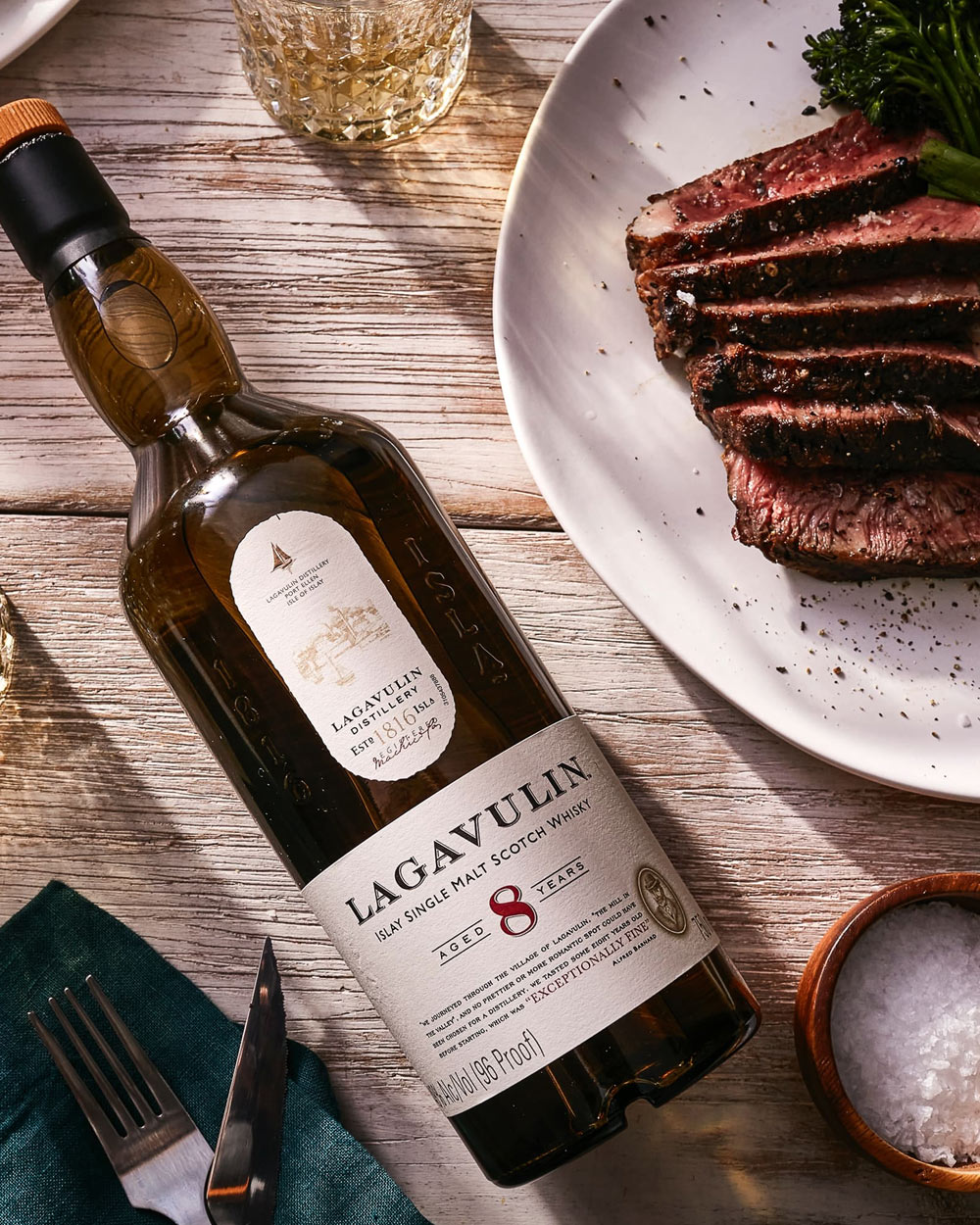Tamworth Distilling is probably best known for its whiskeys infused with things like blue crab and venison, which is a tragedy because these oddball products detract from the innovative whiskeys coming out of this New Hampshire distillery.
Founded in 2015, Tamworth has always strived for a local ethos. Founder Steven Grasse (right) is probably best-known for developing brands like Hendrick’s Gin and Sailor Jerry Rum, but at Tamworth Distilling & Mercantile the emphasis is on finding the highest quality materials from the closest possible locations.

“We’re kind of in this band of the White Mountains as it starts to tear off towards Maine, and so up above, there’s a lot of great, flat grain growing land,” says Tamworth Head Distiller Jamie Oakes.
One of the hidden gems the Tamworth team found early on was AC Hazlett Rye, which they worked with a farmer to develop for the distillery after reading about it in an in-depth report (called a whitepaper) from Far North Spirits. They also have access to an abundance of malted barley thanks to Valley Malt in nearby Massachusetts. Looking for high quality grains has led to numerous partnerships with farmers in the area, often ones that were not accustomed to growing rye through to harvest.
That whitepaper from Far North looked at a handful of pedigreed ryes, their growing environments, and, most importantly, what each varietal’s distillate tasted like.
“It was really interesting when I first read that paper,” Oakes says. They mentioned talking to a farmer in Maine about AC Hazlett, and it kicked off this search for a specific rye instead of an unspecified sense of the term rye. I think a lot of the big producers are not really looking at varietals. People like Leopold Bros and Far North are far more craft-centric and they’re fine tuning what they can offer.”
The Tamworth team set out to find the rye grain varietal that would tie in to their local terroir.
“We have a handful of really great sources and farmers in the Northeast,” Oakes says. “Unfortunately, it’s not really known for being great with grain. We’ve been talking with Jake Dyer over at Benedict Grain since before we were even fully functioning as a distillery. Often farmers will use rye to replenish fields, but not really think of it as a commodity.”
“We're kind of in this band of the White Mountains as it starts to tear off towards Maine, and so up above, there's a lot of great, flat grain growing land.”
— Jamie Oakes, Tamworth Head Distiller
Fortunately between Dyer and Andrea Stanley at Valley Malt, the Tamworth team was able to connect with local farmers, show them there was a need for grain, particularly rye, and convince them to grow it on a somewhat experimental basis in those early years.
But these years of experimentation paid off when the team struck upon AC Hazlett Rye, a variety that’s not only great to work with, but makes delicious whiskey featuring a wide spectrum of flavors. The next step was to figure out the proper recipe.
“Rye has a bad rap as being sticky and gummy,” Oakes says. “But if we make sure that a substantial portion of it is malted, then maybe we won’t run into some of those problems. We’ve worked with that AC Hazlet for years in many different iterations and it’s actually proved to be an exception to the rule as far as processability. We’ve seen Danko rye, which has a lot more protein, foam over. We’ve found AC Hazlet to be kind of a darling.”
The dedication Oakes and his team pursue to create great whiskey doesn’t stop with one distillate.
The distillery offers a host of whiskey styles and other spirits. Their Chocorua line of ryes includes Chocorua Straight Rye, Chocorua Three Sisters, Chocorua 7-Year Liberty Trail Rye, and special barrel finished releases. They also produce Dunce Bourbon, Old Man of the Mountain Bottled-in-Bond Bourbon, William Whipple’s Winter Wheat Whiskey, and Mellow Fellow Straight Corn Whiskey. They also make rum, brandy, amaro, vodka, and gin. And coming soon, well, maybe not too soon, will be an American Single Malt Whiskey.
“To go back to Andrea over at Valley Malt, we wouldn’t have a single malt program that we’ve been putting away for a few years now,” Oakes says. “The single malt is not ready for market yet, it’s something we didn’t want to rush. Andrea called one day and told me a farmer right in my backyard used to be a dairy farmer and they can’t really do that anymore, and they’re kind of going more towards grain.” I don’t know if you’re aware, but malt is one of those things where in the ’70s, they started regulating barley for low glycosidic nitrate, which is a precursor to ethyl carbamate, which is a carcinogen. So there’s a lot of barley out there that brewers can use, but we condense it, we actually distill it and make it more potent. So brewers have a whole breadth of barleys, but for us, we have to ask, is it one of the five known to be low GN? It took a little bit of research, but it’s one of them. And it’s grown in our backyard! So it’s got a great story. That was one that really lit the fire for us. We’ve been putting it away for a little bit.”
Adding to the local terroir ethos, some of the American Single Malt and Chocorua Rye Tamworth is putting away is being matured in casks made from New Hampshire Oak.
Currently, Tamworth has a 300 barrel capacity warehouse and is building a second warehouse. The current warehouse is able to be heated in the cold winter months. Maturation is a challenge, Oakes says, because there are seven months of the year when the temperature never gets above 55 degrees Fahrenheit, making the maturation climate closer to Scotland or France than a standard Bourbon-maturing climate like Kentucky. The climate is also drier. The barrel entry proof for whiskeys ranges by product anywhere between 110-120 proof and the typical barrel is a char 3.
Maggie Kimberl is the Content Editor of American Whiskey Magazine and the Co-Chair of the World Whiskies Awards. She is a freelance spirits journalist focusing on whiskey culture in the United States, though she considers herself to be ‘geographically blessed’ to live in the epicenter of the bourbon world, Louisville, Kentucky. When she’s not covering the bourbon beat you can find her browsing through vintage vinyl with her kids or tending to her homegrown tomatoes. Follow her on Twitter, Instagram, and Facebook, and check out her blog.









